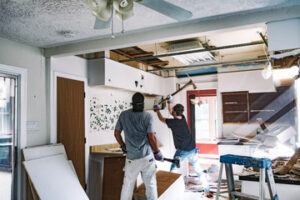Window Replacement can transform a home, letting in more natural light and improving its energy efficiency. It can also increase its value and enhance a home’s aesthetic.

Whether you’re repairing an old window that lets drafts in or replacing a picture window to open a space, you’ll want to understand the process. Visit Website to learn more.
A quality installation of new replacement windows will increase your home’s value, reduce energy costs, and enhance its aesthetics. However, window replacement is a significant investment that can cost anywhere from $1,000 to $1,500 per window. While the upfront cost may seem high, the return on investment from increased curb appeal and energy efficiency can make this home improvement project worthwhile.
The number of windows you are replacing and the window style play a major role in determining the overall cost. Additionally, labor rates can vary depending on where you live – large cities typically have higher labor costs.
Window frame material also influences the final cost of your project. Vinyl frames are affordable and offer decent energy efficiency, while composite frames are more durable but come at a higher price tag. Wood frames are a beautiful option that add elegance to your home but require regular maintenance and are not the most energy efficient.
Other influencing factors include the size and type of windows, whether they are single- or double-hung windows, and any additional features that you choose to add. The location of the windows can impact installation difficulty and cost as well, with ground-level windows being easier and less expensive to install than those on a second floor. You should also consider whether you need to purchase a permit, as this can add to the overall cost of your project.
Finally, you will need to decide if you want to replace the entire window or just the glass. While the cost of glass-only windows is less than the total cost of replacing the entire window, it may not be a good idea if your existing frame and sash are damaged or in poor condition. Repairing these components can be more costly in the long run and may not even be possible if they are severely damaged or rotted.
If your home’s windows are outdated or damaged, window replacement can improve its appearance and boost energy efficiency. However, the initial cost can be significant, so it’s important to plan carefully and compare options before making a decision. By working with a professional, you can rest assured that your new replacement windows will be installed correctly and provide a return on investment for years to come.
Energy Efficiency
Investing in new windows to improve energy efficiency and curb appeal is more than just a money-saving investment. It’s also a way to increase your home’s value and make it a more comfortable place to live. In addition to reducing energy costs, you can enjoy increased privacy and comfort thanks to replacement windows that minimize air leakage and prevent overheating from solar rays.
In fact, according to ENERGY STAR, about 30% of the heat lost in homes is due to single-paned or older windows, so replacing them with efficient options can have a big impact. Energy-efficient window options include argon gas-filled glass and low-e coatings. These features help reduce your heating and cooling bills, resulting in significant savings over time. In addition, you may be able to qualify for tax credits or rebates to offset the cost of installing these windows.
Aside from the upfront cost, homeowners should also consider the maintenance requirements of their window choice. The installation process and material type have a direct impact on how often they need to be cleaned and how much care they require in order to stay functional. Wood windows, for example, require more frequent upkeep in terms of paint and moisture protection compared to vinyl-clad counterparts.
The size of the window and frame, as well as any accessories, will also influence the cost of window replacement. For instance, larger windows are more expensive than smaller windows and will need more materials to maintain structural integrity. However, larger windows will offer greater benefits, such as improved ventilation and natural light.
If you’re considering window replacement, consult with a local professional to determine the best options for your home and budget. They can help you choose the right windows for your needs and provide recommendations based on resale value, energy efficiency, and more. They’ll ensure that the job is done properly and that you don’t end up with a project that over-exceeds your budget. In addition, they’ll protect your home from construction debris and water-resistive barriers to keep it safe during the process. You’ll have peace of mind knowing that your window replacement project is backed by the Neighborly Done Right Promise.
Design
When installed correctly, new windows can bolster your home’s curb appeal. They’re available in an array of shapes, sizes, and finishes to complement your existing aesthetic, including frame colors and textures, hardware styles, and glass panes. And many modern replacement windows come with easy-to-clean materials and tilt-in sashes that make cleaning simple. They’re also designed to limit condensation build-up, which reduces the risk of mold and mildew growth in your home. Additionally, the insulation they provide helps minimize outside noise, creating a quieter living space.
Window design can play a key role in energy efficiency, too. By limiting heat transfer, new replacement windows can significantly reduce your heating and cooling costs. This is particularly true during Central Texas’s harsh winters and hot summers. In addition, the energy-efficient features they offer can help reduce your carbon footprint and contribute to a healthier planet.
A variety of factors influence the cost of a window, including the size and style you choose. You can select from full replacement windows and insert windows to determine which option is best for your needs. Insert windows work with your existing window frames and sashes, while full replacement windows replace the entire frame and sash. Additionally, you may want to choose a specific insulated glass package for your replacement windows, such as double or triple panes with argon or krypton gasses between each layer of glass. You might also choose to add decorative grids, referred to as mullions, window muntins, divided lites, or simulated divided lites.
The location of the replacement windows also affects the cost due to the additional labor needed to safely access and install them in hard-to-reach locations, such as basement or egress windows. Finally, if your replacement windows require special construction features, such as an oversized window or multi-pane awning windows, these will increase the overall cost.
While improved aesthetics are a significant benefit of window replacement, it’s important to consider the impact that this upgrade will have on your home’s functionality and energy costs. When you choose an energy-efficient window type, you’ll enjoy lower utility bills and improved comfort while contributing to a more sustainable global climate.
Maintenance
When window problems occur, homeowners often choose to replace the entire window rather than repair the specific issue. While this may seem like the best course of action, it can actually end up costing you more in the long run. Repairing a specific issue, such as a draft or crack, will save you money and reduce the amount of waste generated by manufacturing new windows.
If you notice that your home’s windows are leaking or not functioning properly, it is important to address the problem quickly. Failing to do so could lead to serious damage and a variety of issues, including mold and mildew, water leaks, and rotted frames or sashes.
Many of these issues can be prevented by regularly examining and maintaining your windows. In addition to regular cleaning, it is also a good idea to check for moisture and drafts. Moisture build-up can lead to window rot and damage the exterior of your home, while drafts can increase energy bills and make your home less comfortable.
If your windows are leaking or not functioning properly, a professional should be consulted to evaluate the situation and determine the best solution. Professionals will be able to recommend the right type of window and installation method, which can improve the efficiency and functionality of your home. They will also be able to provide a warranty and guarantee for their work, giving you peace of mind that the job will be done correctly.
Some common windows issues that may require replacement include broken window panes, rotting or damaged frames or sashes, and leaking sills on wood windows. Some of these problems can be addressed by replacing just the glass, but in most cases, it is best to replace the whole window to preserve the efficiency and structural integrity of your home.
The cost of Window Replacement depends on the type and materials you choose, as well as the size and complexity of your window. For example, a bay or bow window will have more components than a traditional sash window. Additionally, wood and vinyl windows are more expensive than aluminum and fiberglass options.
